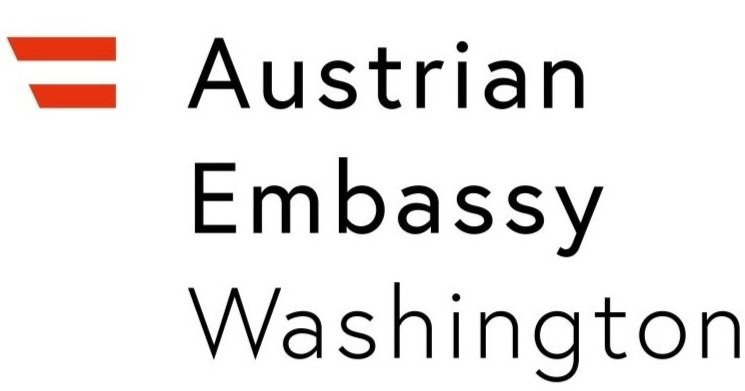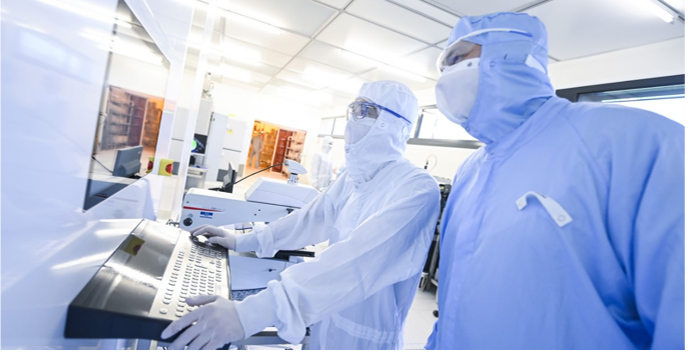Quantum Activities at Silicon Austria Labs GmbH
Silicon Austria Labs GmbH (SAL) is a leading applied research center for electronics and software based systems, specialized in sensor systems, microtechnology, optoelectronics, RF electronics, and embedded systems. With a team of approximately 275 scientists operating across three locations—Graz, Villach, and Linz—SAL focuses on bridging the gap between fundamental research and industrial applications. The organization offers access to Austria's largest research cleanroom facilities, covering 1400 m², and other cutting-edge laboratory infrastructure for experimental physics, software and hardware development. Through collaborative efforts with research partners across the value chain, SAL accelerates the transfer of knowledge from academia to industry, fostering innovative solutions past the state-of-the-art.
SAL’s cleanroom facilities covering 1400 m² for cutting-edge research on quantum technologies.
Photo: SAL
SAL has been active in quantum research since its establishment in 2018. As future advancements in classical domains for enhanced sensitivity, efficiency, and security will rely on quantum technologies, SAL focuses on translating these emerging technologies into industry-driven applications at an early stage. The major quantum technologies SAL is focusing on are: 1. solid-state spin-active defects in wide band gap semiconductors, 2. chip-scale quantum photonics and 3. highly integrated ion trap chips.
Assembled diamond crystal with a microwave antenna for quantum sensing applications.
Photo: SAL
A key area of focus is on platforms facilitating long spin coherence times at room temperature, a crucial factor for practical applications. Diamond and silicon carbide are two such platforms that hold great promise for future industrial adoption, particularly in the field of quantum sensors. SAL is uniquely positioned to drive progress in this field, based on its comprehensive ecosystem for miniaturized chip-scale quantum systems. This ecosystem is built on a foundation of in-house expertise that spans all the necessary disciplines, including fundamental solid-state physics, quantum optics, multiphysics simulations, microfabrication technology, and device and system integration. Additionally, SAL's capabilities extend to software and hardware development, prototyping, calibration, and testing, ensuring a seamless and self-sufficient development process. By leveraging this broad range of expertise, SAL is able to design and deliver tailored, high-performance building blocks. These solutions include custom-fabricated micro-optics, permanent magnetic systems, and application-specific integrated circuits (ASICs) that enable embedded quantum control algorithms, signal acquisition, and processing, and thus development of novel, miniaturized quantum sensors. Examples of such sensors include robust vectorial magnetometers with sub-nanotesla level sensitivity, as well as nuclear spin-based quantum gyroscopes.
Assembled quantum photonic integrated circuit (QPIC) transmitter chip for QKD applications.
Photo: SAL
The second key quantum area at SAL covers chip-scale quantum photonics including dedicated expertise in quantum photonic integrated circuits (QPICs) for industrial applications. This is based on fundamental developments of novel material platforms such as thin-film lithium niobate and aluminum nitride as integral part of novel QPICs and again covers the entire value chain of technology. Additionally, application ready devices are demonstrated like QPIC transmitters for quantum key distribution (QKD) applications based on commercially available III-V semiconductor platforms. Beyond that, the third area at SAL covers QPIC technologies for application in ion trap chips. Latest developments in QPIC technology demonstrate highly promising capabilities for combination with state-of-the-art ion trap technology for enabling the next generation of integrated qubits as crucial building blocks of novel quantum computers. Here SAL can bring in its micro-fabrication capabilities to support and strengthen the Austrian ion trap ecosystem. Those and other integration efforts especially benefit from SALs capabilities in “quantum-ready” assembly and integration.



